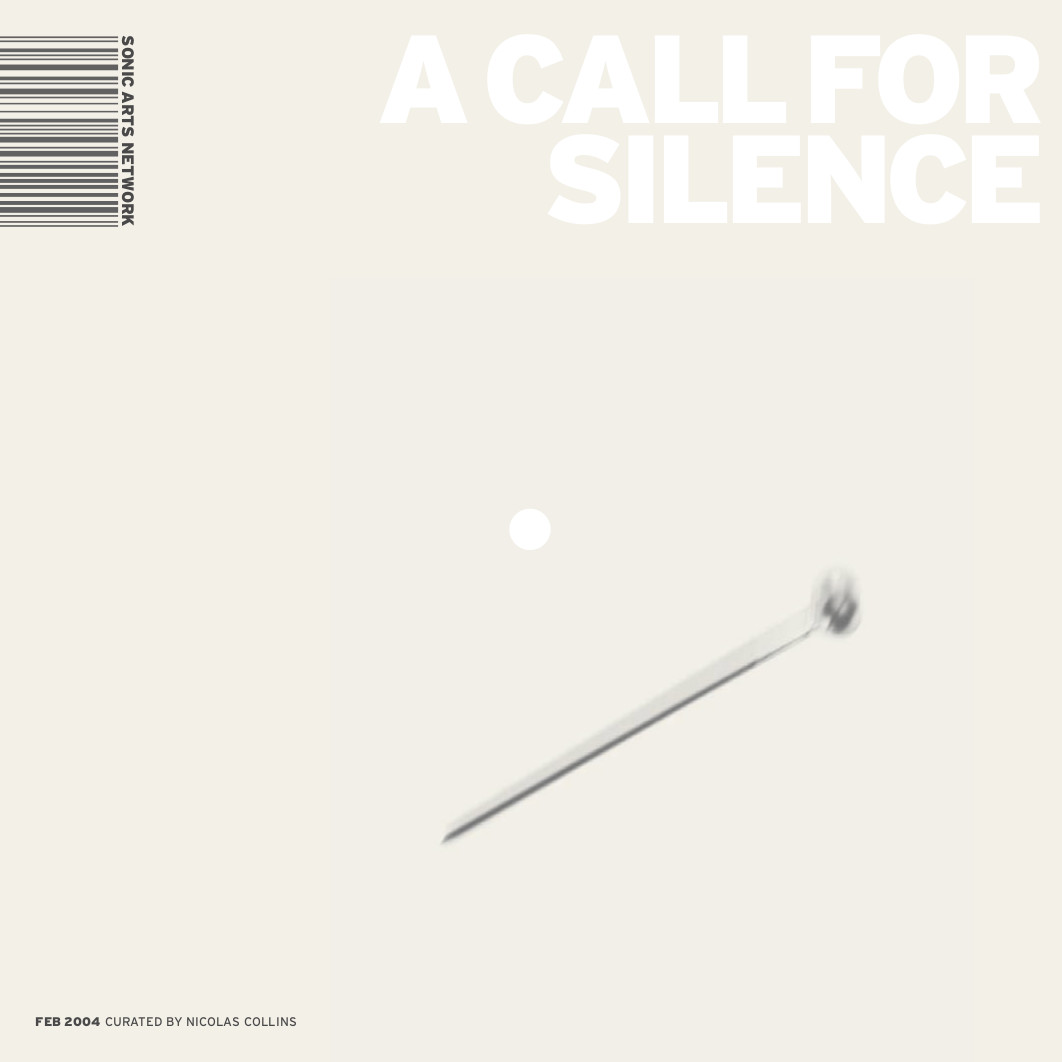Nicolas Collins (ed.): A Call for Silence (2004)
Filed under booklet, sound recording | Tags: · music, silence, sound

As in the old Roue’s quip that “a drink before and a cigarette after are three best things in life,” sometimes the most important moments of our lives lie in an unspoken ellipse. The same is true of some of our most beautiful sounds. On this CD 34 artists provide personal views into that sonic ellipse, suggestions for listening to that which might otherwise pass you by: count-offs, groove grit, tape hiss, breaths, rests, CD glitch, guitar hum, audience anticipation, reverb tails, room tones, minutes of silence, the calm before a storm.
Publisher Sonic Art Network, London, 2004
28 pages
PDF
PDF (compressed version; for the sake of scanning)
Listen (34 tracks)
John M. Picker: Victorian Soundscapes (2003)
Filed under book | Tags: · 1800s, acoustics, history of literature, listening, literature, music, noise, phonograph, recording, silence, sound, sound recording, united kingdom, voice

“Far from the hushed restraint we associate with the Victorians, their world pulsated with sound. This book shows how, in more ways than one, Victorians were hearing things. The representations close listeners left of their soundscapes offered new meanings for silence, music, noise, voice, and echo that constitute an important part of the Victorian legacy to us today. In chronicling the shift from Romantic to modern configurations of sound and voice, Picker draws upon literary and scientific works to recapture the sense of aural discovery figures such as Babbage, Helmholtz, Freud, Bell, and Edison shared with the likes of Dickens, George Eliot, Tennyson, Stoker, and Conrad.”
Publisher Oxford University Press, 2003
ISBN 0195151917, 9780195151916
220 pages
PDF, PDF (updated on 2017-3-2)
Comments (4)James H. Johnson: Listening in Paris: A Cultural History (1996)
Filed under book | Tags: · 1700s, 1800s, audience, cultural history, france, listening, music, music history, paris, silence, sociology of music, spectatorship

Beginning with the simple question, “Why did audiences grow silent?” Listening in Paris gives a spectator’s-eye view of opera and concert life from the Old Regime to the Romantic era, describing the transformation in musical experience from social event to profound aesthetic encounter. James H. Johnson recreates the experience of audiences during these rich decades with brio and wit. Woven into the narrative is an analysis of the political, musical, and aesthetic factors that produced more engaged listening. Johnson shows the gradual pacification of audiences from loud and unruly listeners to the attentive public we know today.
Drawing from a wide range of sources–novels, memoirs, police files, personal correspondence, newspaper reviews, architectural plans, and the like–Johnson brings the performances to life: the hubbub of eighteenth-century opera, the exuberance of Revolutionary audiences, Napoleon’s musical authoritarianism, the bourgeoisie’s polite consideration. He singles out the music of Gluck, Haydn, Rossini, and Beethoven as especially important in forging new ways of hearing. This book’s theoretical edge will appeal to cultural and intellectual historians in many fields and periods.
Publisher University of California Press, Berkeley/Los Angeles/London, 1996
Volume 21 of Studies on the History of Society and Culture series
ISBN 0520918231, 9780520918238
384 pages

